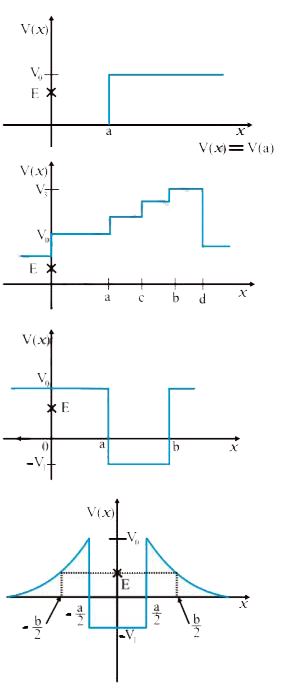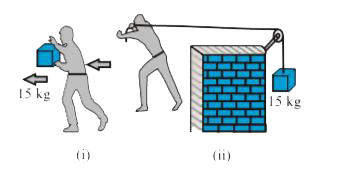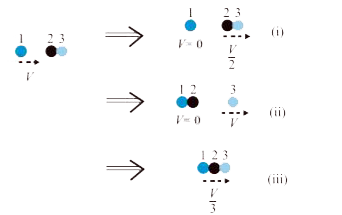Complete Solutions to EXERCISES of chapter WORK, ENERGY AND POWER of Class 11 book with complete answers and questions
| Class 11 | PHYSICS |
| Chapter | WORK, ENERGY AND POWER |
| NCERT TELUGU | EXERCISES |
| Number Of Questions | 38 |
| Academic Year | 2023-24 |
The sign of work done by a force on a body is important to understand. State carefully if the following quantities are positive or negative :
Work done by a man in lifting a bucket out of a well by means of a rope tied to the bucket.View SolutionThe sign of work done by a force on a body is important to understand. State carefully if the following quantities are positive or negative :
Work done by gravitational force in the above caseView SolutionThe sign of work done by a force on a body is important to understand. State carefully if the following quantities are positive or negative :
Work done by friction on a body sliding down an inclined plane.View SolutionThe sign of work done by a force on a body is important to understand. State carefully if the following quantities are positive or negative :
Work done by an applied force on a body moving on a rough horizontal plane with uniform velocity.View SolutionThe sign of work done by a force on a body is important to understand. State carefully if the following quantities are positive or negative :
Work done by the resistive force of air on a vibrating pendulum in bringing it to rest.View SolutionA body of mass 2 kg initially at rest moves under the action of an applied horizontal force of 7N on a table with coefficient of kinetic friction `= 0.1`. Compute the
Work done by the applied force in 10s.View SolutionA body of mass 2 kg initially at rest moves under the action of an applied horizontal force of 7N on a table with coefficient of kinetic friction `= 0.1`. Compute the
Work done by friction in 10s.View SolutionA body of mass 2 kg initially at rest moves under the action of an applied horizontal force of 7N on a table with coefficient of kinetic friction `= 0.1`. Compute the
Work done by the net force on the body in 10s.View SolutionA body of mass 2 kg initially at rest moves under the action of an applied horizontal force of 7N on a table with coefficient of kinetic friction `= 0.1`. Compute the
Change in kinetic energy of the body in 10s.View SolutionGiven in Fig. 6.11 are examples of some potential energy functions in one dimension. The total energy of the particle is indicated by a cross on the ordinate axis. In which the particle cannot be found for the given energy. Also, indicate the minimum total energy the particle must have in each case. Think of simple physical contexts for which these potential energy shapes are relevant.
 View Solution
View SolutionAnswer the following :
Comets move around the sun in highly elliptical orbits. The gravitational force on the comet due to the sun is not normal to the comet's velocity in general. Yet the work done by the gravitational force over every complete orbit of the comet is zero. Why?View SolutionAnswer the following :
An artificial satellite orbitting the earth in very thin atmosphere loses its energy gradually due to dissipation against atmospheric resistance, however small. Why then does its speed increase progressively as it comes closer and closer to the earth?View SolutionAnswer the following :
In Fig.6.13. (i) the man walks 2m carrying a mass of 15kg on his hands. In Fig. 6.13. (ii), he walks the same distance pulling the rope behind him. The rope goes over a pulley, and a mass of 15 kg hangs at its other end. In which case is the work done greater?
 View Solution
View SolutionUnderline the correct alternative :
When a conservative force does positive work on a body, the potential energy of the body increases/decreases/remains unaltered.View SolutionUnderline the correct alternative :
Work done by a body against friction always results in a loss of its kinetic/potential energy.View SolutionUnderline the correct alternative :
The rate of change of total momentum of a many-particle system is proportional to the external force/sum of the internal forces on the system.View SolutionUnderline the correct alternative :
In an inelastic collision of two bodies, the quantities which do not change after the collision are the total energy/total linear momentum/total energy of the system of two bodies.View SolutionAnswer carefully, with reasons :
What are the answers to (a) and (b) for an inelastic collision?View SolutionAnswer carefully, with reasons :
If the potential energy of two billard balls depends only on the separation distance between their centres, is the collision elastic or inelastic? (Note, we are talking here of potential energy corresponding to the force during collision, not gravitational potential energy).View SolutionA body is initially at rest. It undergoes one-dimensional motion with constant acceleration. The power delivered to it at time t is proportional to
View SolutionA body is moving unidirectionally under the influence of a source of constant power. Its displacement in time t is proportional to
View SolutionA body constrained to move along the z-axis of a coordinate system is subject to a constant force F given by
`F= -hati+2hatj+3hatk N`
where `hati, hatj, hatk` are unit vectors along the x-, y- and z-axis of the system respectively. What is the work done by this force in moving the body a distance of 4m along the z-axis?View SolutionAn electron and a proton are detected in a cosmic ray experiment, the first with kinetic energy 10 keV, and the second with 100 keV. Which is faster, the electron or the proton? Obtain the ratio of their speeds. (electron mass `=9.11xx10^(-31)kg`, proton mass `=1.67xx10^(-27)kg, 1 eV= 1.60xx10^(-19)J`).
View SolutionA rain drop of radius 2mm falls from a height of 500 m above the ground. It falls with decreasing acceleration (due to viscous resistance of the air) until at half its original height, it attains its maximum (terminal) speed, and moves with uniform speed thereafter. What is the work done by the gravitational force on the drop in the first and second half of its speed on reaching the ground is `10 ms^(-1)`?
View SolutionA molecule in a gas container hits a horizontal wall with speed `200 ms^(-1)" and angle "30^(@)` with the normal, and rebounds with the same speed. Is momentum conserved in the collision ? Is the collision elastic or inelastic ?
View SolutionA pump on the ground floor of a building can pump up water to fill a tank of volume `30 m^(3)` in 15 min. If the tank is 40 m above the ground, and the efficiency of the pump is 30%, how much electric power is consumed by the pump?
View SolutionTwo identical ball bearings in contact with each other and resting on a frictionless table are hit head-on by another ball bearing of the same mass moving initially with a speed V. If the collision is elastic, which of the following (Fig. 6. 14) is a possible result after collision?
 View Solution
View SolutionThe bob A of a pendulum released from `30^(@)` to the vertical hits another bob B of the same mass at rest on a table as shown in Fig. 6.15. How high does the bob A rise after the collision ? Neglect the size of the bobs and assume the collision to be elastic.
 View Solution
View SolutionThe bob of a pendulum is released from a horizontal position. If the length of the pendulum is 1.5m, what is the speed with which the bob arrives at the lowermost point, given that it dissipated 5% of its initial energy against air resistance?
View SolutionA trolley of mass 300 kg carrying sandbag of 25 kg is moving uniformly with a speed of 27 km/h on a frictionless track. After a while, sand starts leaking out of a hole on the floor of the trolley at the rate of `0.05kg s^(-1)`. What is the speed of the trolley after the entire sand bag is empty?
View SolutionA body of mass 0.5 kg travels in a straight line with velocity `v= ax^(3/2)" where "a= 5m^(1/2)s^(-1)`. What is the work done by the net force during its displacement from x=0 to x= 2m?
View SolutionThe blades of a windmill sweep out a circle of area A.
If the wind flows at a velocity v perpendicular to the circle, what is the mass of the air passing through it in time t?View SolutionThe blades of a windmill sweep out a circle of area A.
What is the kinetic energy of the air?View SolutionThe blades of a windmill sweep out a circle of area A.
Assume that the windmill converts 25% of the wind's energy into electrical energy, and that `A= 30 m^(2), v= 36 km/h` and the density of air is `1.2 kgm^(-3)`. What is the electrical power produced?View SolutionA person trying to lose weight (dieter) lifts a 10 kg mass, one thousand times, to a height of 0.5m each time. Assume that the potential energy lost each time she lowers the mass is dissipated.
How much work does she against the gravitational force?View SolutionA person trying to lose weight (dieter) lifts a 10 kg mass, one thousand times, to a height of 0.5m each time. Assume that the potential energy lost each time she lowers the mass is dissipated.
Fat supplies `3.8xx10^(7) J` of energy per kilogram which is converted to mechanical energy with a 20% efficiency rate. How much fat will the dieter use up?View SolutionA family uses 8 kW of power.
Direct solar energy is incident on the horizontal surface at an average rate of 200 W per square meter. If 20% of this energy can be converted to useful electrical energy, how large an area is needed to supply 8 kW?View SolutionA family uses 8 kW of power.
Compare this area to that of the roof of a typical house.View Solution
EXERCISES questions and complete solutions for chapter WORK, ENERGY AND POWER of NCERT PHYSICS(TELUGU) of Class 11
